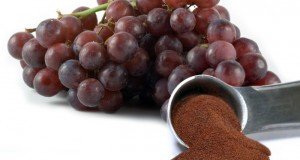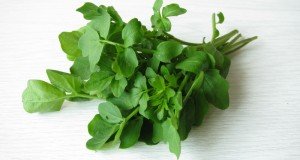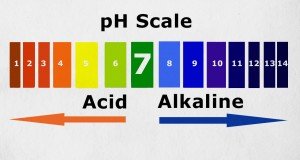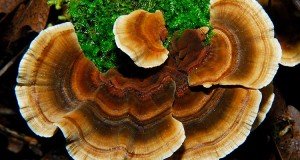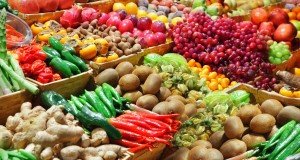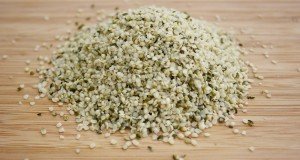New research links excessive oxalates to breast cancer
(NaturalHealth365) Information about little-known compounds called oxalates can be confusing and conflicting. They are often equated with the “bad” substances in foods but, in reality, oxalates are neither good nor bad. They can become problematic, however, when too many of them accumulate in the body.
When there’s too many oxalates – they can overwhelm the kidneys and lead to kidney stones and immune deficiency. Plus, according to a recent study, high levels of oxalate in the mammary area has been linked to breast cancer tumor growth as well.
Most oxalates are formed by the body itself
Oxalates (COOH), or oxalic acid, are strongly acidic substances that help both plants and animals in metabolization. About 60% to 80% of oxalates are formed by the body’s functions themselves. The other 20 to 40% of oxalates come from food.
Most fruits and vegetables contain a small amount of oxalatic acid and they are found in the leaves of plants as opposed to the roots, stalks and stems. The following foods contain a high amount of oxalates overall:
- Rhubarb
- Chocolate
- Spinach
- Beet greens
- Swiss chard
- Some nuts, especially almonds, cashews and peanuts
- Some berries, especially gooseberries
- Lemon and lime peel
- Some grains and pastas (except brown rice)
- Some legumes, especially navy beans, black beans and soybeans
- Okra
- Parsley
How are oxalates linked to breast cancer?
Oxalates are oxidizing substances. As such, they are extremely volatile and can be damaging to tissue in large amounts. Oxalate crystals cause the formation of kidney stones which can block the flow of urine and lead to kidney infection and bladder cancer.
These crystals are also razor sharp and can cause direct damage and long-lasting inflammation to whatever internal tissues they come into contact with. Oxalate-iron crystals can lead to iron depletion. When calcium-oxalate crystals form, they can lodge in internal organs and in bone. As they grow, they will crowd out bone marrow leading to immune deficiency and anemia.
Excess oxalates also have the ability to chelate heavy metals. Unlike other chelators, however, oxalates trap metals like mercury and lead in tissues. Excess oxalate has been linked to fibromyalgia, vulvodynia (vulvar pain), digestive disorders and autism.
The most startling new connection between excess oxalates and disease has to do with breast cancer, however. A 2015 study conducted by the National University of Cordova in Argentina compared the oxalate levels of breast cancer tumor tissue and regular breast tissue. They found that “all tested breast tumor tissues contain a higher concentration of oxalates than their counterpart non-pathological breast tissue.”
The researchers also discovered that oxalatic acid caused tumor proliferation and stimulated the expression of pro-tumor genes. Surprisingly, proliferation did not happen when oxalate was injected into the backs of laboratory mice. This indicates that high oxalate levels do not induce cancer tumor growth in all types of tissue.
Three ways to reduce your oxalate levels
1. Obtain calcium from natural foods. Calcium has an interesting relationship with oxalates. Approximately 5-15% of the world population will develop some form of kidney stone. Of those, 80% will be calcium-oxalate stones. When calcium is combined with foods that are high in oxalates within the intestines, the two together form an oxalate-calcium crystal that the body cannot absorb.
When this happens, a “stone” is formed that will make its way to the kidneys to eventually be eliminated in the urine. The presence of oxalate-calcium crystals which can block urine flow and cause kidney infection can also lead to a higher risk of renal, pelvis and bladder cancers. These same kinds of crystals can also form in the lungs, nerves, brain, bones, blood vessels and joints.
Does this mean that if you are prone to kidney stones, you should limit calcium intake? Not necessarily. Research conducted on vegetarians found that they did not have higher than normal rates of calcium deficiency nor osteoporosis caused by oxalate interference.
In fact, according to a 2014 study published in the European Journal of Epidemiology, vegetarians had a lower rate of kidney stones than meat eaters did. Those who consumed calcium supplements on a regular basis, however, have shown time and again to have higher rates of kidney stones. Calcium supplementation has also been linked to both prostate and breast cancer. Stick to natural and preferably vegetable and fruit-based sources of calcium to avoid both kidney stones and cancer.
2. Be aware of your protein intake, especially if you are a meat-eater: Be cautious when it comes to the protein, especially if it is derived from meat and dairy. Oxalates are produced from amino acids in the liver.
Amino acids are the building blocks on which proteins are made so some researchers make the connection between total protein amounts and total oxalates formed. For meat eating women, the general recommendation is around 5 ounces a day. This is equivalent to a small hamburger patty or four eggs. The USDA states that, on average, Americans eat 30% more meat protein than the recommended allowance.
3. Maintain good intestinal flora: According to research, some individuals have a physiology that is prone to higher levels of oxalate uptake in the digestive tract (thus, a higher risk of kidney stones). Although there is evidence to suggest that hereditary disposition plays a role for some people, there is also a strong link between kidney stone formation and disorders of the digestive system, such as inflammatory bowel disease, leaky gut and Crohn’s.
Could oxalate hyper-absorption have more to do with extreme gut flora imbalance than genetics? The jury is still out on that one. What is known, however, is that it is the job of specific flora, in particular, certain species of Oxalobacter formigenes, Lactobacillus, and Bifidobacteria, to process oxalatic acid and prepare it for absorption. Currently, there are several studies underway which focus on the role of oral probiotics in this process.
Let food work for you to keep oxalate levels in balance
Remember that problems only emerge when there is an excess of oxalates in the system. The standard American diet contributes to oxalate overload but you can also keep it in check through being proactive with prevention. Eating anti-oxidant rich food, consuming citrate-rich lemon and lime juice (which experts say can help prevent calcium-oxalate kidney stones), staying hydrated and watching your salt intake are other ways to keep kidney stones in check.
Also, don’t let fear of kidney stones prevent you from getting adequate amounts of vitamin C and D. One of the ways that oxalates are formed is through conversion from vitamin C. However, studies thus far have been inclusive as to whether high vitamin C intake actually leads to increased oxalate production.
In regards to vitamin D, deficiency of this vital substance has reached pandemic proportions in the developed world, including amongst those who have experienced kidney stones. Be sure to get your levels checked the next time you get blood work done. Maintaining a healthy balance of all substances in the body, including oxalates, is the only way to achieve and experience true health naturally.
About the author: Dr. Veronique Desaulniers (“Dr. V”) is a best-selling author and specialist in Chiropractic, Bio-Energetics, Meridian Stress Analysis, Homeopathy and Digital Thermography. After 30 years in active practice, she decided to “retire” and devote her time to sharing her personal, non-toxic Breast Cancer healing journey with others. Her years of experience and research have culminated in “The 7 Essentials™ “, a step-by-step coaching program that unravels the mystery of healing the body. Her website and personal healing journey have touched the lives of thousands of women around the globe. To get your F.R.E.E. 7-day mini e-course and to receive her weekly inspiring articles on the power of natural medicine – visit: BreastCancerConqueror.com
References:
https://www.whfoods.com/genpage.php?tname=george&dbid=48
https://www.upmc.com/patients-visitors/education/nutrition/Pages/low-oxalate-diet.aspx
https://www.ncbi.nlm.nih.gov/pubmed/26493452
https://jnci.oxfordjournals.org/content/89/19/1453.full
https://www.mdpi.com/2076-0817/2/4/636
https://www.ncbi.nlm.nih.gov/pubmed/24752465
https://www.usda.gov/factbook/chapter2.pdf
https://www.ncbi.nlm.nih.gov/pubmed/10541257
https://www.ncbi.nlm.nih.gov/pubmed/27002809
https://www.ncbi.nlm.nih.gov/pubmed/24752465
https://www.sciencedaily.com/releases/2012/04/120418203524.htm
https://www.scientificamerican.com/article/vitamin-d-deficiency-united-states
https://advances.nutrition.org/content/2/3/254.full



